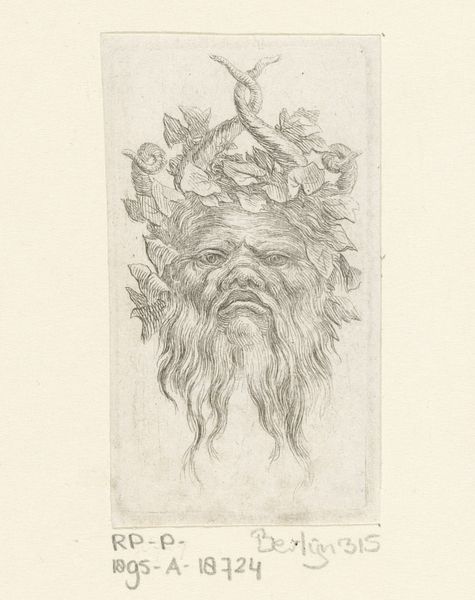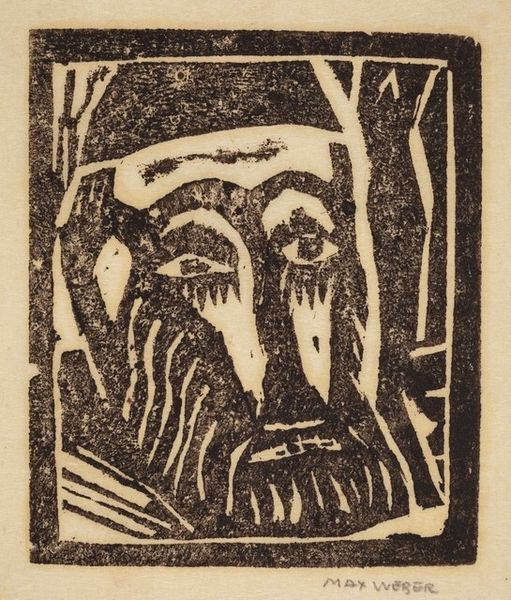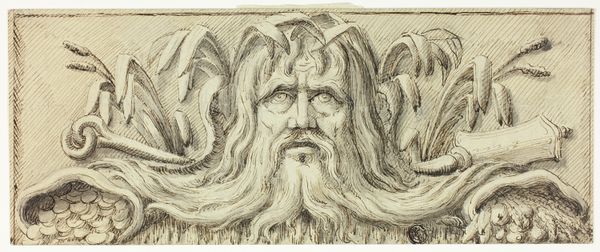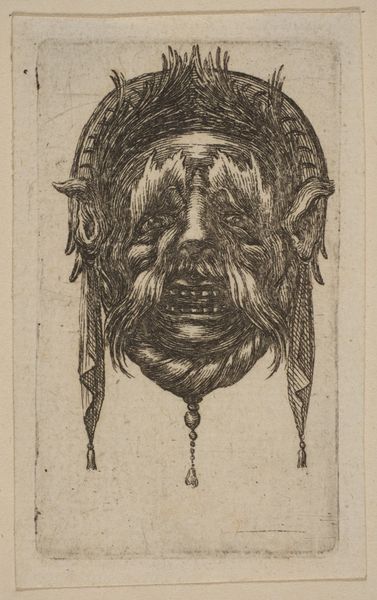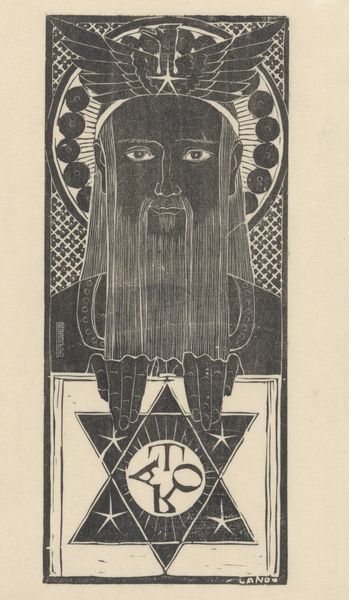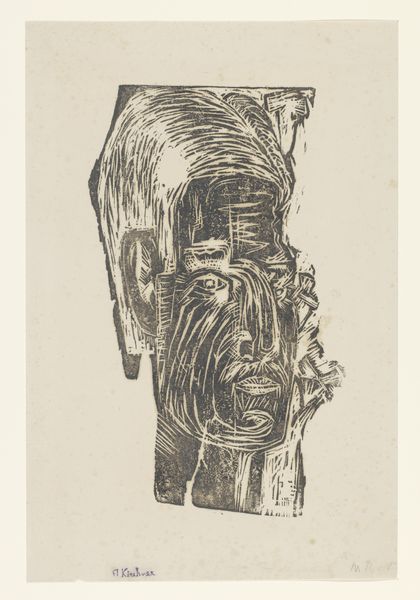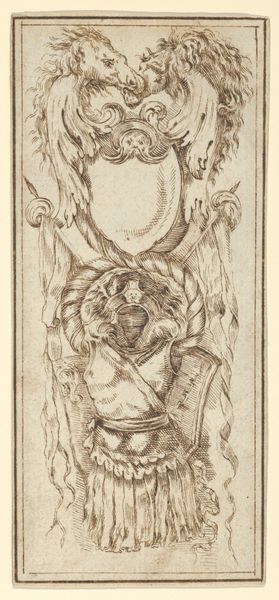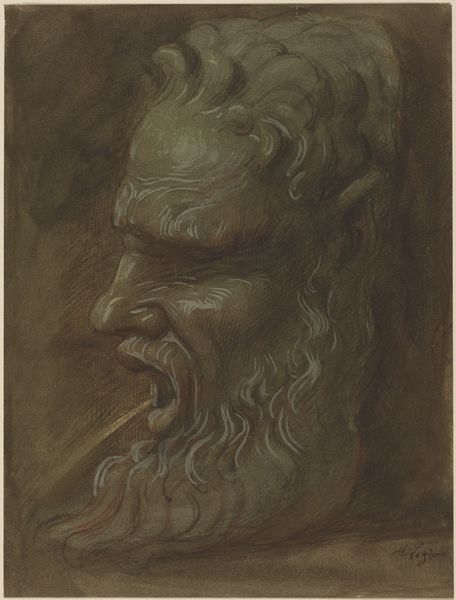
drawing, print, etching, wood, architecture
#
drawing
#
medieval
# print
#
etching
#
landscape
#
line
#
wood
#
architecture
Dimensions: plate: 8.1 x 3.97 cm (3 3/16 x 1 9/16 in.) sheet: 9.53 x 11.75 cm (3 3/4 x 4 5/8 in.)
Copyright: National Gallery of Art: CC0 1.0
Curator: This is John Taylor Arms' "Corbel on Gate House, Stokesay Castle," etched in 1944. What’s your immediate take on it? Editor: The gaze is heavy, isn't it? Imposing. This ornate guardian... there's something almost aggressively watchful about it. Dark and mysterious. Curator: It's amazing what Arms could achieve with line, isn't it? Capturing the texture of aged wood and stone. Corbel faces like these were a very popular feature of medieval architecture. Editor: Absolutely! Green Man imagery, clearly—the foliate head is ancient. Across cultures, these nature spirits served to integrate the human structure with the natural world. It's a symbolic connection, but it speaks to deeper needs—anchoring our dwellings, not just physically, but spiritually. What kind of symbolism were they looking for by bringing such ancient symbolism into architecture? Curator: Stokesay Castle itself is a powerful presence, representing permanence, the enduring human effort. The Green Man likely acted as both a guardian, and maybe a gentle reminder of nature's power, its slow but inevitable reclamation. He looks ancient, so the cultural memory embedded in architecture would only go that far back in this space. Editor: The eyes follow you, don’t they? That deep stare reminds me of archaic sculptures with unnaturally wide eyes, staring out of millennia. There’s an otherworldly feel. Curator: Maybe it speaks to how, even within these very solid constructions, the veil between worlds always feels so very thin. An idea of enduring, living stone. What do you make of the technique here, the sharp precision that suggests a mechanical quality but at the same time reveals every individual mark? Editor: The tension is what grabs me. Between the modern medium, a very delicate printmaking technique and a medieval, handmade subject. A certain reverence, paying respect to the object by documenting every single tiny nuance and aspect of its aging? Curator: Exactly! Arms was meticulous, and also, I feel, deeply fascinated. Maybe even reverent, like you suggest. This etching isn't just a rendering, it's a meditation on time, art, and memory. Editor: It’s definitely given me a whole new perspective on looking at these stony faces. Such simple drawings, that open to an ocean of ideas behind them!
Comments
No comments
Be the first to comment and join the conversation on the ultimate creative platform.
